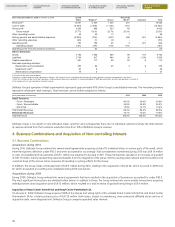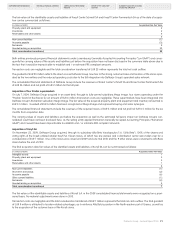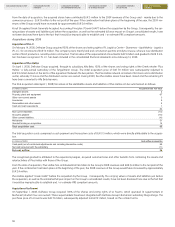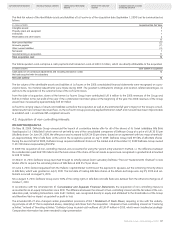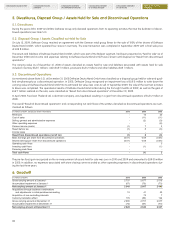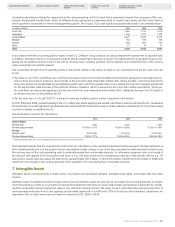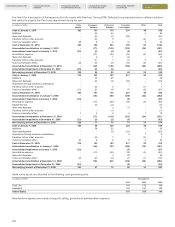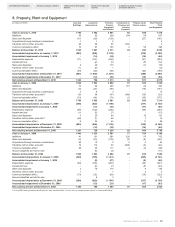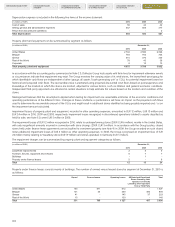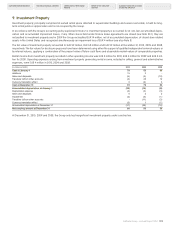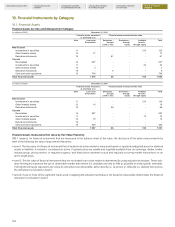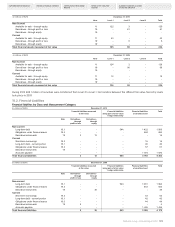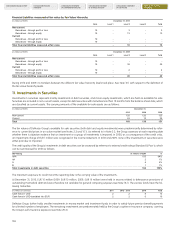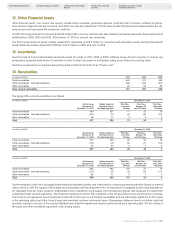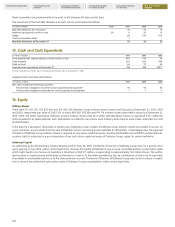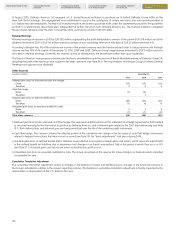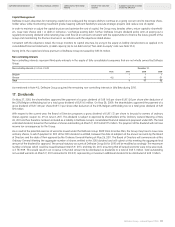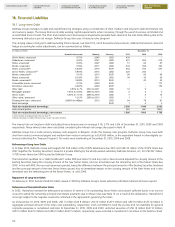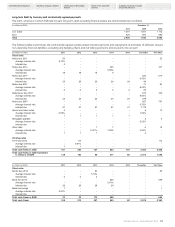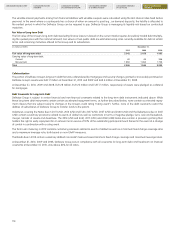Food Lion 2010 Annual Report Download - page 108
Download and view the complete annual report
Please find page 108 of the 2010 Food Lion annual report below. You can navigate through the pages in the report by either clicking on the pages listed below, or by using the keyword search tool below to find specific information within the annual report.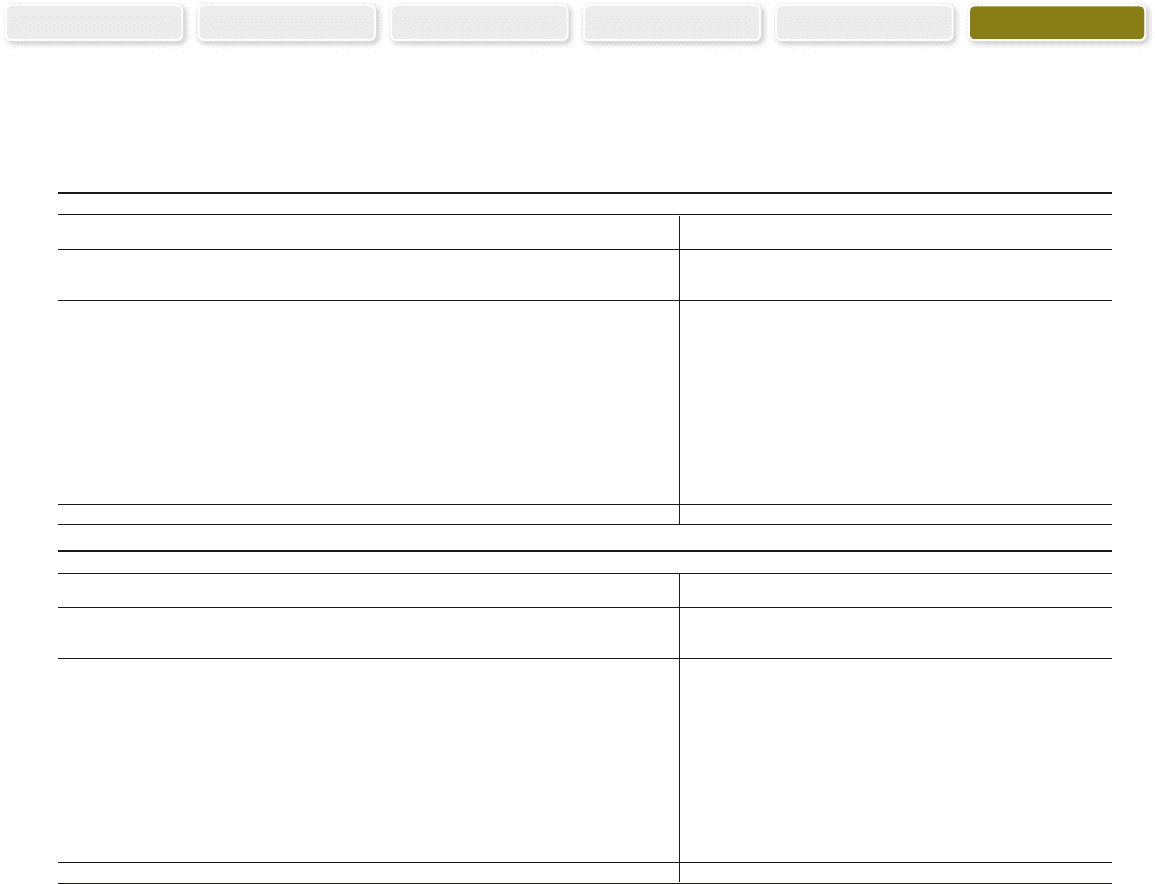
104
CONSOLIDATED BALANCE SHEET CONSOLIDATED INCOME
STATEMENT CONSOLIDATED STATEMENT
OF COMPREHENSIVE INCOME CONSOLIDATED STATEMENT
OF CHANGES IN EQUITY CONSOLIDATED STATEMENT
OF CASH FLOWS
NOTES TO THE FINANCIAL
STATEMENTS
10. Financial Instruments by Category
10.1. Financial Assets
Financial Assets by Class and Measurement Category
(in millions of EUR) December 31, 2010
Financial assets measured Financial assets measured at fair value
at amortized cost
Note Loans and Derivatives - Derivatives - Available Total
Receivables through through for sale -
profit or loss equity through equity
Non-Current
Investments in securities 11 - - - 125 125
Other financial assets 12 17 - - - 17
Derivative instruments 19 - 61 - - 61
Current
Receivables 14 637 - - - 637
Investments in securities 11 - - - 43 43
Other financial assets 12 3 - - - 3
Derivative instruments 19 - 5 - - 5
Cash and cash equivalents 15 758 - - - 758
Total financial assets 1 415 66 - 168 1 649
(in millions of EUR)
December 31, 2009
Financial assets measured Financial assets measured at fair value
at amortized cost
Note Loans and Derivatives - Derivatives - Available Total
Receivables through through for sale -
profit or loss equity through equity
Non-Current
Investments in securities 11 - - - 126 126
Other financial assets 12 16 - - - 16
Derivative instruments 19 - 96 - - 96
Current
Receivables 14 597 - - - 597
Investments in securities 11 - - - 12 12
Other financial assets 12 15 - - - 15
Derivative instruments 19 - - - - -
Cash and cash equivalents 15 439 - - - 439
Total financial assets 1 067 96 - 138 1 301
Financial Assets measured at fair value by Fair Value Hierarchy
IFRS 7 requires, for financial instruments that are measured in the balance sheet at fair value, the disclosure of fair value measurements by
level of the following fair value measurement hierarchy:
•Level1:Thefairvalueofafinancialinstrumentthatistradedinanactivemarketismeasuredbasedonquoted(unadjusted)pricesforidentical
assets or liabilities. A market is considered as active, if quoted prizes are readily and regularly available from an exchange, dealer, broker,
industry group, pricing service, or regulatory agency, and those prices represent actual and regularly occurring market transactions on an
arm’s length basis.
•Level2:Thefairvalueoffinancialinstrumentsthatarenottradedinanactivemarketisdeterminedbyusingvaluationtechniques.Thesevalu-
ation techniques maximize the use of observable market date where it is available and rely as little as possible on entity specific estimates.
If all significant inputs required to fair value an instrument are observable, either directly (i.e. as prices) or indirectly (i.e. derived from prices),
the instrument is included in level 2.
•Level3:Ifoneormoreofthesignificantinputsusedinapplyingthevaluationtechniqueisnotbasedonobservablemarketdate,thefinancial
instrument is included in level 3.


